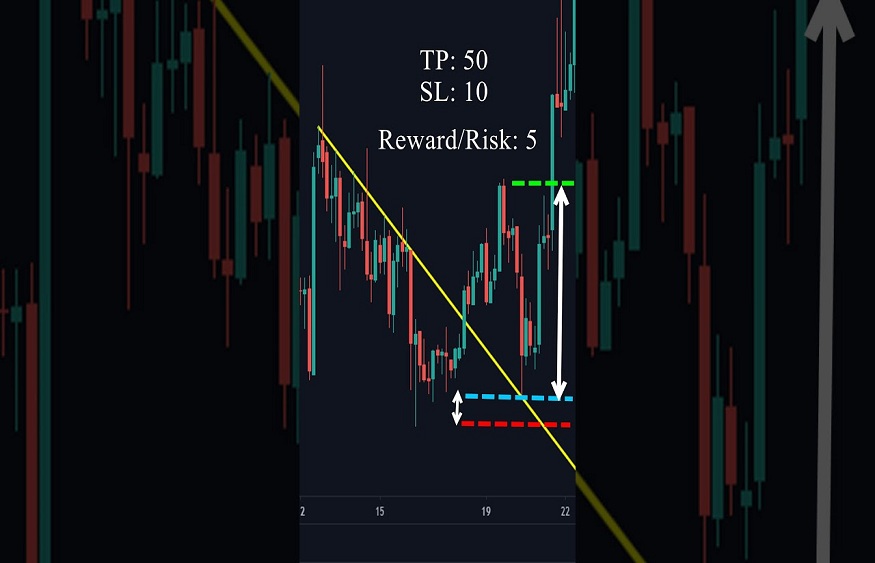In the vast and ever-shifting landscape of financial markets, currency trading stands as a dynamic powerhouse, offering unparalleled opportunities for savvy investors and traders alike. The global foreign exchange (Forex) market, where currencies are bought and sold, plays a pivotal role in shaping the economic landscape on a global scale. As we embark on the journey of exploring strategies for success in currency trading, it’s essential to grasp the profound significance of this market and the potential it holds.
Currency trading, often referred to as Forex trading, involves the exchange of one currency for another, and its influence extends far beyond the borders of individual nations. It serves as a barometer for global economic health, reflecting the ebb and flow of international trade, geopolitical events, and economic policies. Trillions of dollars are traded daily, making the Forex market the largest and most liquid financial market globally.
Unlocking the Potential for Success:

In this dynamic realm, success is not merely an aspiration; it’s a tangible possibility for those armed with the right knowledge, skills, and, most importantly, effective strategies. The volatile nature of currency markets presents both challenges and opportunities, making strategic navigation essential. The potential for profit is immense, but so is the risk. It is within this juxtaposition that the need for well-defined, proven strategies becomes apparent.
The world of currency trading is not for the faint of heart. It requires astuteness, adaptability, and a keen understanding of the factors that drive currency movements. Whether you’re a seasoned trader or a newcomer eager to explore the world of Forex, this article aims to shed light on strategies that can pave the way for success. From fundamental principles to advanced techniques, we’ll delve into the tools and insights that can empower you to navigate the complexities of currency trading and unlock the doors to financial success in this exciting and ever-evolving market.
Basics of Currency Trading:
In understanding the nuances of currency trading, let’s begin with the foundational elements that form the backbone of this dynamic financial market.
Currency Pairs:
At the core of currency trading is the concept of currency pairs. Currencies are traded in pairs, where one currency is exchanged for another. Each pair consists of a base currency and a quote currency. The exchange rate indicates how much of the quote currency is needed to purchase one unit of the base currency. For instance, in the EUR/USD pair, the euro (EUR) is the base currency, and the U.S. dollar (USD) is the quote currency.
Exchange Rates:
Exchange rates represent the relative value of one currency to another and are influenced by a myriad of factors, including economic indicators, interest rates, geopolitical events, and market sentiment. These rates fluctuate continuously, forming the basis for currency traders to make informed decisions about buying or selling currencies.
Major vs. Minor Pairs:
Currency pairs are categorized into major, minor, and exotic pairs. Major pairs include the most traded currencies globally, such as EUR/USD, USD/JPY, and GBP/USD. Minor pairs, also known as cross-currency pairs, exclude the U.S. dollar and involve the trading of other major currencies. Exotic pairs involve one major currency and one from a smaller or emerging market.
Fundamental Principles:
Understanding the fundamental principles governing currency markets is vital for anyone looking to engage in currency trading.
Supply and Demand: Like any other market, currency prices are influenced by the basic economic principle of supply and demand. If demand for a currency exceeds its supply, its value typically rises, and vice versa.
Economic Indicators: Various economic indicators, including GDP growth, employment rates, and inflation, impact currency values. Traders often analyze these indicators to gauge the economic health of a country and anticipate potential currency movements.
Interest Rates: Central banks set interest rates, which have a direct impact on currency values. Higher interest rates often attract foreign capital, leading to an appreciation of the currency.
Geopolitical Events: Political stability, trade agreements, and geopolitical events can significantly influence currency markets. Unexpected political developments can lead to sudden and substantial currency movements.
Market Sentiment: The overall sentiment of traders and investors plays a crucial role in currency markets. Positive or negative sentiment can drive buying or selling activity, impacting exchange rates.
As we lay the groundwork with these fundamental principles, the subsequent sections will delve into the strategic approaches and techniques that can empower traders to navigate the intricacies of currency trading successfully.
The Importance of Strategies in Currency Trading:
In the dynamic and unpredictable world of currency trading, having a well-defined strategy isn’t just advantageous; it’s a critical determinant of success. This section explores why strategic planning is pivotal and how it serves as a guiding compass for traders navigating the complexities of currency markets.
Mitigating Market Uncertainties:
Currency markets are inherently volatile, subject to sudden fluctuations influenced by a myriad of factors. Without a clear strategy, traders may find themselves at the mercy of market whims, exposing their positions to unnecessary risks. A well-thought-out strategy acts as a shield against uncertainty, providing a structured approach to decision-making in both stable and turbulent market conditions.
Risk Management:
One of the primary functions of a trading strategy is to manage risk effectively. By defining risk tolerance, setting stop-loss orders, and establishing position sizing rules, a strategy helps traders protect their capital from excessive losses. This disciplined risk management approach is crucial for preserving financial health and ensuring that no single trade has the potential to derail a trader’s overall portfolio.
Objective Decision-Making:
Emotions can run high in the fast-paced world of currency trading. Fear, greed, and impatience can cloud judgment, leading to impulsive and irrational decisions. A well-defined strategy acts as a set of rules that guide trading decisions objectively. It removes the emotional element, promoting consistency and preventing traders from making impulsive moves based on momentary market fluctuations.
Capitalizing on Opportunities:
Beyond risk mitigation, strategies are crafted to identify and capitalize on market opportunities. Whether through technical analysis, fundamental analysis, or a combination of both, a strategy provides a systematic approach to recognizing favorable entry and exit points. Traders armed with a strategy are better positioned to seize opportunities aligned with their market outlook and trading preferences.
Adaptability to Market Conditions:
Currency markets can shift between trending and ranging conditions, and different strategies excel in distinct environments. A well-defined strategy is adaptable, allowing traders to navigate diverse market scenarios. Whether it’s a trending market where momentum strategies thrive or a consolidating market where range-bound strategies prove effective, having a strategy that aligns with prevailing conditions is key to success.
Continuous Improvement:
A trading strategy is not static; it evolves over time through continuous learning and refinement. Successful traders regularly review and adjust their strategies based on changing market dynamics and personal experiences. This commitment to improvement ensures that the strategy remains relevant and effective in the ever-changing landscape of currency trading.
In essence, a trading strategy is the roadmap that guides traders through the intricate terrain of currency markets. It provides structure, discipline, and a framework for making informed decisions. As we delve into specific strategies in the subsequent sections, keep in mind that each successful trade is not just a result of market analysis but a manifestation of a well-executed and meticulously crafted trading strategy.
Fundamental Analysis in Currency Trading:
Fundamental analysis is a cornerstone of successful currency trading, providing traders with a comprehensive understanding of the economic factors that influence currency values. This section delves into the role of fundamental analysis, shedding light on the key components that traders consider in their decision-making process.
Economic Indicators:
Economic indicators serve as vital metrics, offering insights into the economic health of a country. Traders closely monitor indicators such as Gross Domestic Product (GDP) growth, unemployment rates, inflation, and manufacturing data. Positive economic indicators often strengthen a country’s currency, while negative indicators can lead to depreciation. Fundamental analysts carefully interpret these indicators to anticipate potential currency movements.
Central Bank Decisions:
Central banks play a pivotal role in currency markets through monetary policy decisions. Interest rate changes, quantitative easing, and forward guidance are tools employed by central banks to influence economic conditions. Traders keenly observe central bank statements and decisions, as shifts in monetary policy can have a profound impact on currency values. Understanding the stance and outlook of key central banks is integral to making informed trading decisions.
Geopolitical Events:
Geopolitical events, such as elections, trade agreements, and geopolitical tensions, can have profound effects on currency values. Changes in political leadership or unexpected geopolitical developments can create volatility in currency markets. Traders incorporating fundamental analysis consider the geopolitical landscape to anticipate potential market reactions and adjust their positions accordingly.
Using Fundamental Analysis for Informed Decisions:
Traders can leverage fundamental analysis by staying informed about economic calendars, central bank communications, and global news. By understanding the underlying economic factors influencing currencies, traders can anticipate potential market trends and make informed decisions on when to enter or exit trades. Combining fundamental analysis with other strategies, such as technical analysis, creates a comprehensive approach to currency trading.
Technical Analysis Techniques:
In addition to fundamental analysis, technical analysis is a powerful tool that helps traders assess historical price movements and identify potential future trends. This section introduces key technical analysis techniques relevant to currency trading.
Chart Patterns:
Chart patterns, such as head and shoulders, double tops and bottoms, and triangles, provide visual representations of historical price movements. Traders use these patterns to identify potential trend reversals or continuations. Recognizing chart patterns helps traders make informed predictions about future price movements.
Trend Analysis:
Trend analysis involves identifying the direction of price movements over time. Traders use trendlines and trend indicators to determine the prevailing market trend. Understanding whether the market is trending upward, downward, or in a range assists traders in aligning their strategies with the current market conditions.
Indicators like Moving Averages and RSI:
Technical indicators, such as moving averages and the Relative Strength Index (RSI), offer quantitative insights into price movements. Moving averages smooth out price data to reveal underlying trends, while the RSI measures the strength and speed of a price movement. Traders use these indicators to confirm trends, identify potential reversals, and gauge the market’s momentum.
Identifying Entry and Exit Points:
Technical analysis aids traders in pinpointing optimal entry and exit points for trades. By analyzing historical price data and identifying key support and resistance levels, traders can make informed decisions about when to enter a trade to capitalize on potential price movements and when to exit to secure profits or limit losses.
In conclusion, the integration of fundamental and technical analysis equips traders with a holistic approach to currency trading. By understanding the economic factors driving currencies and employing technical tools to analyze price movements, traders can make more informed decisions, enhancing their ability to navigate the intricacies of the currency markets successfully.
Developing a Personalized Trading Plan:
While strategies and analyses provide the framework for currency trading, the cornerstone of consistent success lies in the development and adherence to a personalized trading plan. This section guides readers through the essential steps of creating a plan tailored to their unique circumstances and objectives.
Understanding Your Risk Tolerance:
Begin by assessing your risk tolerance – the amount of risk you are comfortable taking on each trade. Be honest with yourself about how much capital you can afford to risk without jeopardizing your financial well-being. Your risk tolerance will influence critical elements of your trading plan, such as position sizing and the setting of stop-loss orders.
Defining Your Financial Goals:
Clearly articulate your financial goals before entering the currency markets. Whether your aim is capital preservation, consistent returns, or aggressive growth, having well-defined goals will shape the overall structure of your trading plan. Your goals will determine the level of risk you’re willing to undertake and the time horizon for your trades.
Aligning with Your Trading Style:
Your trading style – whether you’re a day trader, swing trader, or position trader – plays a crucial role in shaping your trading plan. Each style requires a distinct approach in terms of analysis, time commitment, and risk management. Tailor your plan to match your trading style, ensuring it aligns with your lifestyle and preferences.
Setting Clear Entry and Exit Criteria:
Clearly define the criteria that will trigger your entry into a trade and establish the conditions under which you will exit. This includes identifying specific technical or fundamental signals that align with your strategy. Having predefined entry and exit points helps eliminate impulsivity and ensures disciplined decision-making.
Risk Management Rules:
Incorporate risk management rules into your trading plan to protect your capital. Specify the percentage of your capital you are willing to risk on each trade and establish rules for adjusting position sizes based on changing market conditions. Consider the use of stop-loss orders to limit potential losses.
Review and Adaptability:
A good trading plan is not static; it evolves over time. Regularly review and assess the effectiveness of your plan based on your trading performance. Be open to adapting your plan as you gain experience, encounter different market conditions, or identify areas for improvement.
Documentation and Journaling:
Maintain a trading journal to document your trades, including entry and exit points, reasons for the trade, and the outcome. This journal serves as a valuable tool for learning from both successful and unsuccessful trades. Regularly reviewing your journal helps refine your strategies and improves decision-making over time.
Emphasizing Discipline:
Discipline is the bedrock of a successful trading plan. Adhering to the rules and guidelines you’ve set for yourself is crucial for long-term success. Emotional discipline is particularly important; avoid making impulsive decisions driven by fear or greed.
In essence, a personalized trading plan is your roadmap to success in currency trading. By aligning it with your risk tolerance, financial goals, and trading style, you create a framework that provides direction, consistency, and a higher probability of achieving your objectives in the challenging yet rewarding world of currency markets.
As we conclude this exploration into the strategies and principles that underpin successful currency trading, it’s essential to distill the key takeaways and instill a sense of direction for those venturing into this dynamic realm.
Key Takeaways:
Foundational Understanding: Currency trading involves grasping fundamental concepts such as currency pairs, exchange rates, and the distinction between major and minor pairs.
Strategic Importance: Strategies are not just advantageous; they are imperative for success in currency trading. A well-defined strategy mitigates market uncertainties, manages risks effectively, and positions traders to capitalize on opportunities.
Fundamental Analysis: Understanding economic indicators, central bank decisions, and geopolitical events is integral to making informed trading decisions. Fundamental analysis provides a comprehensive view of the factors influencing currency values.
Technical Analysis Techniques: Technical analysis, including chart patterns, trend analysis, and indicators like moving averages and RSI, empowers traders to analyze historical price movements and identify potential future trends.
Personalized Trading Plan: The development of a personalized trading plan, aligned with individual risk tolerance, financial goals, and trading style, is crucial. This plan acts as a roadmap, guiding traders through the complexities of the currency market.
Encouragement for Success:
Embarking on a journey in currency trading demands more than just knowledge; it requires dedication, discipline, and a commitment to continuous learning. As you navigate this intricate landscape, remember:
Implement Strategic Approaches: Apply the strategies discussed, blending fundamental and technical analyses with a personalized trading plan. Strategic approaches provide the structure and guidance needed to make informed decisions.
Adaptability and Learning: Be adaptable in your strategies, recognizing that the currency market is dynamic and ever-changing. Embrace continuous learning, staying abreast of market developments, and refining your approach based on experience.
Discipline Matters: Discipline is the linchpin of success in currency trading. Adhering to your trading plan, managing risks prudently, and staying disciplined in the face of market fluctuations will set you on a path to long-term success.
As you navigate the exciting and challenging terrain of currency trading, approach it with a combination of knowledge, strategy, and a thirst for continuous improvement. The potential for success is vast, and by applying these principles, you position yourself not just as a participant but as a confident and informed trader in the ever-evolving world of currency markets. Happy trading!

